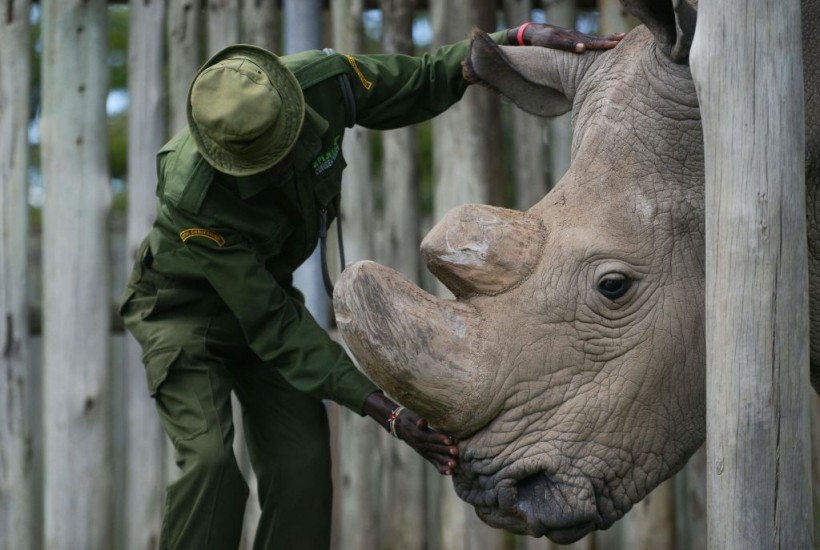
In a race against time to save one of Earth's most endangered species, biotech company Colossal partners with BioRescue, a consortium dedicated to scientific conservation missions.
Their mission: to rescue the northern white rhino, a majestic creature on the brink of extinction. With only two females of this iconic species remaining on our planet, their fate hangs in the balance.
But hope now springs anew as advanced technology and cutting-edge genetics come into play.
The Plight of the Northern White Rhino
National Geographic tells us that the northern white rhino, Ceratotherium simum cottoni, was once a thriving species spread across parts of Uganda, Chad, Sudan, the Central African Republic, and the Democratic Republic of Congo.
However, these regions were emptied of these magnificent megavertebrates over a decade ago due to relentless poaching.
Today, there are just two living female northern white rhinos, both born at the Czech ZOO Dvůr Králové and now cared for at the Ol Pejeta Conservancy in Kenya.
The harsh reality is that these gentle giants are considered functionally extinct in the wild due to human activity and illegal wildlife trade.
A Pioneering Partnership
Colossal, known for its ambitious de-extinction projects like the woolly mammoth revival, and BioRescue, a consortium dedicated to saving endangered animals using advanced assisted reproduction technologies, have now joined forces to save this species from the brink of oblivion.
Their partnership signifies hope for the northern white rhino. Together, they will harness the power of genome sequencing, gene editing, and a global catalog of museum samples to create a sustainable and genetically robust northern white rhino population.
The Science Behind the Rescue
Dr. Thomas Hildebrandt, Project Head at BioRescue, has dedicated over 25 years to saving the northern white rhino.
Now, with the advanced genetic technology provided by Colossal, Hildebrandt and his team can piece together the missing links in the species' genetic history.
One critical aspect of this endeavor is genetic editing. The focus here is not only on reviving the species but on enhancing its genetic diversity to ensure resilience against diseases and adaptability to a changing climate.
This is where the partnership's genomic sequencing expertise comes into play.
Read Also: Century-Old RNA Recovered From Extinct Tasmanian Tiger for the First Time Ever
Race Against Time
The urgency of this rescue operation is underscored by the alarming rate at which species are disappearing from our planet. Colossal notes that, without intervention, humanity will lose up to 50% of all biodiversity by 2050.
While traditional conservation efforts primarily focus on preserving landscapes and combating poaching, the dire situation of the northern white rhino necessitates more advanced technologies.
This partnership represents a pioneering approach to conservation that fuses cutting-edge science with an unwavering dedication to saving a species that once roamed freely across vast African landscapes.
A Blueprint for Global Conservation
The partnership between Colossal and BioRescue is not just about saving one species; it's about setting a precedent for international efforts to rescue endangered species.
This innovative model of cooperation brings together experts from across the globe, including Germany, Japan, Italy, and conservationists in African fieldwork.
Stay posted here at Tech Times.
Related Article: Biological Annihilation Era: Study Reveals Human Activities Speed Up Extinction of Animal Species










